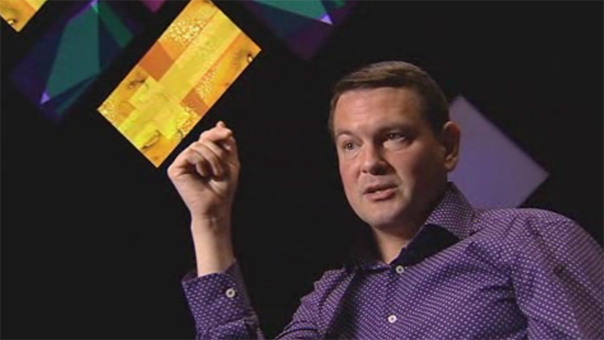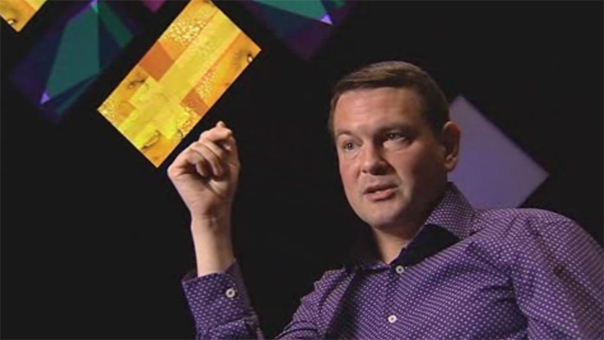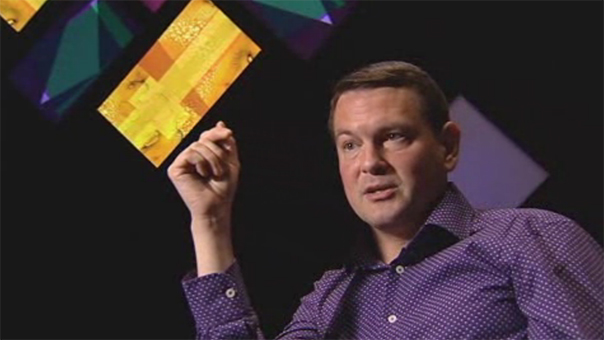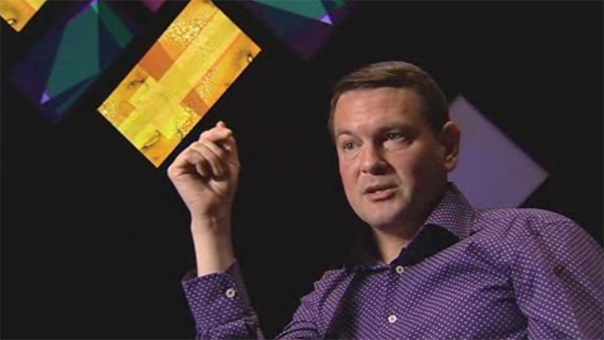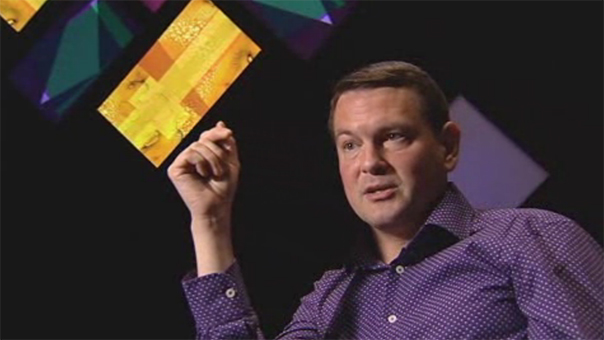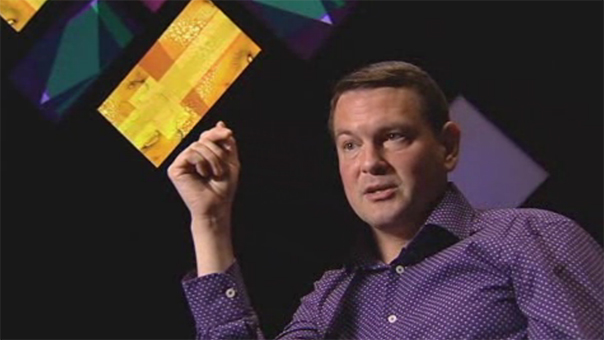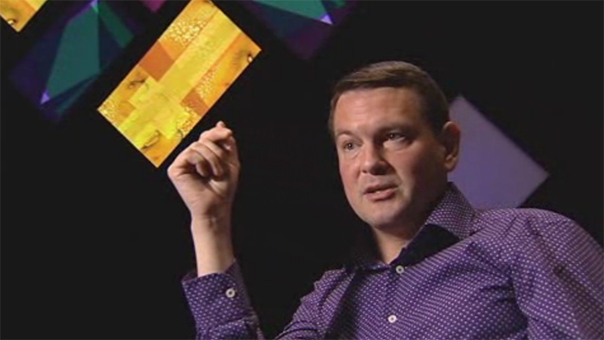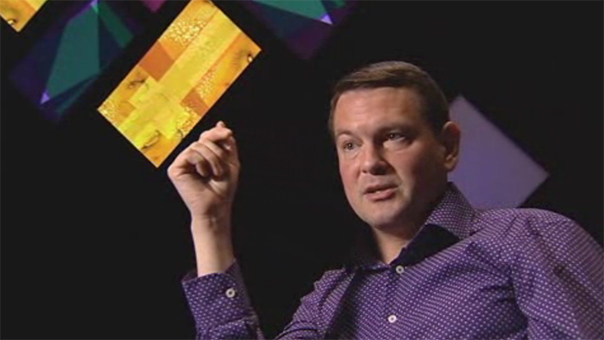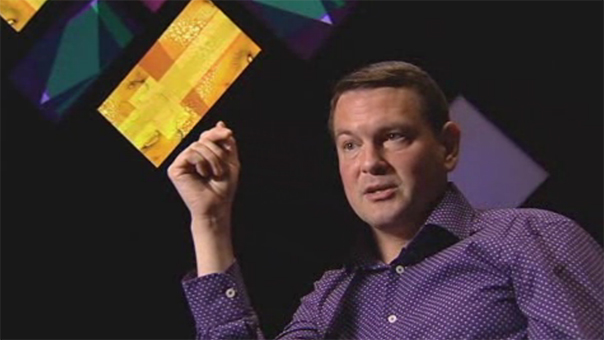77 Million Paintings: comparing installations
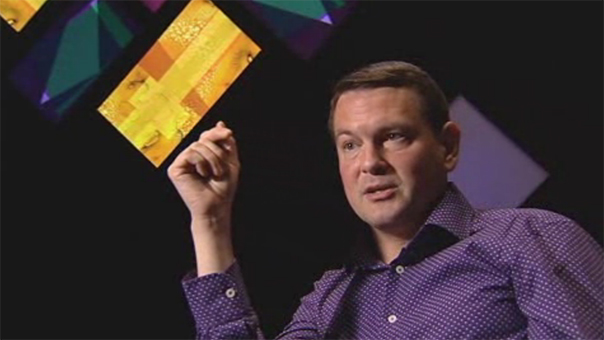
Viewing Guide
-
Think of an installation or sculpture you have seen. How did the installation/sculpture interact with the space it was contained in?
-
Have you ever re-arranged objects within a space? Why did you decide to re-arrange things? What were some of the challenges involved?
-
Nick talks about three venues where 77 Million Paintings has been installed. Summarise how the spaces have varied, and the impact this has had on the installation.
-
Think of another different location Eno’s installation could be installed. Describe some features of the location and how it might affect the way it’s presented.
Interviewer: The work has been installed at a number of places throughout the world such as the Venice Biennale and the Laforet Museum in Tokyo. What were the main considerations behind the Sydney Opera House installation compared to the other sites?
Nick Robertson: Because the piece is made onsite by the venue it tends to be done in a different way by every technical team that puts it together. The way it was produced here was absolutely unique. I’ve never seen it before, and it was a really clever way of doing it, in that the wall was built on the ground and then hoisted into place. The wall has got a metal framework behind it and flats on it and the monitors are secured to the metal framework. We’ve had all sorts of ways of doing it. We’ve had huge wooden structures built to hang it on. And it really comes down to the technical ideas of the people at the venue. The particular considerations for this venue were obviously the shape of the room. It’s a completely square room in plan, so we had to think about how the rest of the space is used. The Venice Biennale was an odd one because it was in a space that was as unlike a gallery as it’s possible to be. It was in an old oil drum warehouse at the Arsenale in Venice. But that gave it a really odd feel, something that’s very different from a space like this, which is also unlike any other space. This feels theatrical to me and we had to play to that sense of theatricality. With the Venice [exhibition], it almost ended up looking like a church. It was as if this thing had landed from outer space and it did have a more church-like feel. We did one in Naples for instance that was at the end of a nine hundred metre Roman corridor and so you’d walk down this corridor and you’d see a little speck of light in the distance and as you got closer you’d see it was a configuration of monitors and that was a very different experience from walking straight into a room and seeing it there. So, we design each exhibition to suit the surrounding it’s going to sit in.
